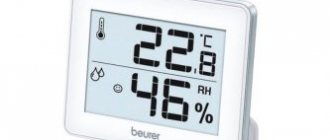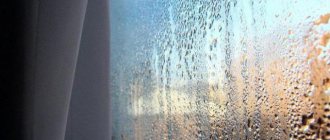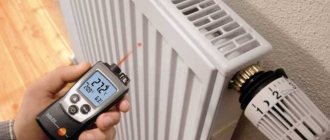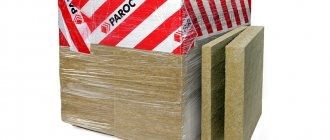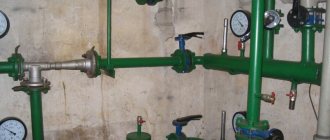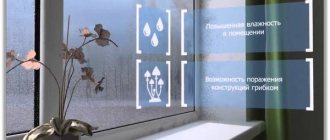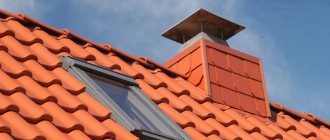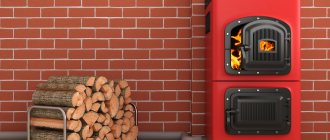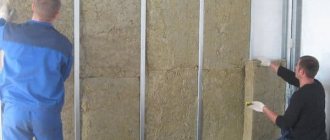What air humidity should be in the apartment?
In an apartment without children
To ensure that all household members live comfortably and breathe easily, maintain an optimal level of humidity and temperature in the apartment. Dry air irritates the mucous membranes of the eyes and nasopharynx, provokes allergic reactions and diseases such as bronchitis or asthma.
Provide regular access to fresh air, this way you will achieve natural air humidification in your living space. A humidity level of 30-60% is considered normal. For an adult, it is recommended to ventilate while resting at night using a slightly open window; this is true even in winter.
Advice: follow the recommendations of physiologists; according to them, a comfortable level of humidity in the house does not depend on the time of year and, according to sanitary and hygienic standards, is 40-60%.
Optimal air humidity
In the children's room
The child's body is more susceptible to the influence of negative environmental factors. Observe certain conditions to create climatic comfort in the children's room. Maintaining proper air humidity is one of the most important factors preventing the development of various diseases.
The humidity norm is 50-60%. A comfortable microclimate prevents drying out of the mucous membranes of the nasopharynx, which are a natural barrier that protects the body from infection.
If the child is sick, create a high level of humidity in the nursery - 70%. Such measures will allow you to quickly cope with the infection and resist the increased proliferation of bacteria on the mucous membranes.
The optimal humidity in a nursery for newborns should be at least 60%. For babies in their first year of life, it is very important to maintain high humidity in the room, since the heat exchange regime of newborns is imperfect.
When exhaling, the baby’s body loses moisture, so the inhaled air must compensate for it, otherwise all the baby’s strength is spent on moisturizing it, and there is a high risk of dehydration. Dry and hot air provokes sweating, another reason for the loss of precious moisture. For a child, this is fraught with disruption of the functioning of organs and body systems and frequent diseases.
Expert opinion
Nikonorov Vladimir Alekseevich
Our expert. Specialist in the field of air conditioning and ventilation with 10 years of experience.
Ask a Question
Strictly observe optimal climatic conditions, maintain the temperature and relative humidity in children's rooms at the proper level! If necessary, adjust it in the required direction. This is the responsibility of every parent!
Impact of high and low humidity on the body
Standard indicators according to GOST
| Age | Summer period | Winter period |
| For adults | 30-60 % | 30-45 % |
| For children | 50-60 % | 50-60% |
| For newborns | 60-70 % | 60% |
Problems arising from lack or excess moisture
Dry indoor air provokes increased moisture loss through the skin and respiratory tract. This can lead to such unpleasant consequences as:
- decreased elasticity of hair, nails and skin, accompanied by the appearance of microcracks, wrinkles, peeling, dermatitis;
- drying of the mucous membrane of the eyes, the symptoms of which are itching, redness, and a feeling of “sand”;
- thickening of the blood, leading to a slowdown in blood circulation, weakness, headaches, decreased performance, and increased stress on the heart;
- an increase in the viscosity of gastric and intestinal juices, causing a slowdown in digestion;
- drying out of the mucous membranes of the respiratory tract, which results in a weakening of local immunity and an increase in the frequency of acute respiratory viral infections;
- an increase in the amount of respiratory allergens in the atmosphere, which should normally be bound by liquid droplets.
Excess moisture in the air creates acceptable conditions for the growth of mold, fungi, and bacteria. As a result, you may encounter the following problems:
- 182
More details - 1211 1092
More details
- 168
More details
- 594
More details
- respiratory diseases - chronic runny nose, bronchitis, asthma, allergies; feeling of stuffiness or dampness in the room;
- unpleasant odor due to the proliferation of pathogenic microorganisms;
- increasing the drying time of washed laundry.
Excessive or insufficient amount of moisture in the house has a bad effect on the condition of home furnishings. Plants dry out or begin to rot, wooden furniture and parquet floors become deformed or “shrink,” paintings fade, paper products lose their structure.
How to measure air humidity in an apartment
Control the microclimate using a hygrometer, a device that measures the humidity in the apartment. There are several types of hygrometers:
- psychrometric - determines the value of relative humidity; to decipher the readings, you need to compare the data with a psychrometric table;
- electronic - very easy to use, data is displayed on the screen as a percentage;
- ceramic - mechanical method of action, based on identifying the level of electrical resistance under the influence of moisture;
- hair - based on the ability of human hair to change length depending on the influence of moisture;
- weight - determines the absolute humidity of the air;
- condensation - the most reliable indicators, the principle of operation is based on the analysis of the total amount of condensate.
If you don’t have a hygrometer, you can find out the information of interest using a room temperature measuring device and an Assmann table. A kind of home psychrometer. Record the room temperature readings from the thermometer, then wrap the tip with a well-wetted cloth and leave for 5 minutes. Having determined the result, calculate the difference between the readings of the dry and wet thermometer; to decipher the value, use the psychrometric table.
If it happens that you don’t have a room thermometer at hand, and you don’t know how to measure humidity, folk methods will come to the rescue. Naturally, these methods will not provide accurate data on the moisture level in the apartment, but they can indicate an increased or decreased microclimate.
- Fill a glass with cold running water and place in the refrigerator for 3 hours. After the specified time has passed, remove the glass and place it in a room away from heat sources. To start the experiment, you should wait 5 minutes, then evaluate the result.
| reduced | average | increased |
| the walls are dry | the walls remained foggy | drops flow down the walls in streams |
- You need a piece of plywood and a spruce branch, the length of which is 30 cm. Fasten the cut to a plywood sheet, mark the place where the loose end ends. Under the influence of moisture, it will change its position; it is necessary to record changes on the sheet daily, checking the readings of the hydrometeorological center. This way you will learn how to determine readings on a homemade moisture meter.
- For the third method you will need a fir cone. Take the pine cone and place it away from heat sources. Under the influence of high air humidity, the scales of the cone will press against each other. And if there is not enough moisture, they will open.
Table: humidity standards in different rooms
Expert opinion
Nikonorov Vladimir Alekseevich
Our expert. Specialist in the field of air conditioning and ventilation with 10 years of experience.
Ask a Question
If you want to find out where the source of high moisture is in your home, arm yourself with a piece of glass. Go to the wall and apply it, and after a short time, examine it. If you find traces of condensation, this means the source is factors outside the room; if everything is dry, then the cause is inside the apartment.
Optimal humidity according to GOST
Acceptable rules and requirements for sanitary standards of air humidity are regulated by Sanpin. Below are the indoor air humidity standards according to Sanpin, depending on the type of room.
- Bedroom. At temperatures up to 20° degrees, the indicator should not exceed 55 percent and not be lower than 40.
- Children's room. Many people wonder what humidity should be in a child’s room. The answer is from 50 to 60 percent, while the permissible temperature should not be more than 24° degrees.
- Living room. In terms of temperature indicators, you should focus on the nursery, but the humidity should be a maximum of 50 percent.
- Bathroom. It is for this room that the minimum temperature level is set at 21° degrees, the maximum is 2° more. The size is the same as in the living room. The indicators are considered optimal if there is an additional ventilation system inside.
- Kitchen. To maintain a healthy microclimate, it is also necessary to equip the air ducts with a ventilation and air conditioning system. Level – from 40 to 50 percent.
- Toilet. The values are identical to the hallway - both rooms should have a value between 40 and 45 percent.
- Study. Considering the presence of a large number of paper products - folders, documents, books, brochures and so on, the recommended humidity during the warm period should be slightly lower - from 30 to 40 percent. By the way, the study is a room with a minimum humidity level in general.
Important! Sanpin also indicates what the humidity in the apartment should be in winter. Generally speaking, we can conclude that it is necessary to increase humidity due to the frequent entry of cold air inside (opening windows, doors, uncovered ventilation ducts, and so on).
How to increase the humidity in a room
To maintain normal health and well-being, it is important to control the microclimatic conditions in the apartment. Experts have established certain humidity levels recommended in residential areas. They must be followed.
To naturally moisten the room, perform regular ventilation and frequent wet cleaning. If this is not enough, use specialized or decorative air humidifiers.
Types of humidifiers:
- mechanical - pass air through themselves, cleaning it from dust and saturating the air with moisture up to 60%;
- steam - heat water and release steam, which humidifies the air in the room by more than 60%;
- ultrasonic - turns water into microscopic droplets and blows them into the room using a fan, the humidity percentage is automatically adjusted.
Mechanical air humidifier Xiaomi Smartmi Air Humidifier 2
Steam humidifier Polaris PUH 7005 TFD
Ultrasonic humidifier Beurer LB 37
What is the real effectiveness of humidifiers?
The most popular air humidifiers are ultrasonic. We won’t even consider others here. You can read more about different types of humidifiers on Giktimes
. The typical output of a good ultrasonic humidifier is 400 grams of water per hour. At the same time, manufacturers proudly declare that this is enough to humidify 50 square meters. That is, one humidifier is enough for an ordinary two-room apartment. And this, theoretically, is true. I'll show it below. In order not to bother with calculations, let’s calculate all the data in an online calculator. The calculations are simple, just plug in the data and that’s it. Therefore, you can easily repeat them for your own conditions. The room is 23 degrees Celsius, relative humidity is 16%. Absolute humidity for these conditions is 3.3 grams of water per cubic meter of air.
We want optimal humidity - 45% at the same temperature. This corresponds to 9.3 grams of water per cubic meter of air. This means we need to add 6 grams of water to each cubic meter of air. In an apartment with an area of 50 square meters (as in the humidifier’s passport) and with a ceiling height of 2.4 meters, the air volume will be 120 cubic meters. Take my word for it, it’s not worth subtracting the volume of furniture from this volume. Most of the internal volume of furniture and the things that are in the furniture is the same air. This means we need to evaporate $6 \times 120 = $720 grams of water to raise the humidity. It seems that within 2 hours a typical humidifier should raise the air humidity to optimal. But this is if the apartment is hermetically sealed. You can't live in such an apartment. Therefore, each housing has an air exchange rate. This indicator shows how many times per hour the indoor air is completely replaced by outside air. It is very difficult to somehow measure the air exchange rate. But the recommended multiplicity is 0.35 hours. That is. the air in the apartment is completely renewed approximately every three hours. As a result, in 2 hours the humidifier saturates the air with steam and in three hours all the air is completely replaced by fresh and dry air from the street.
In fact, this is a well-known problem about two pipes, into one of which water flows into the pool, and out of the other, and you need to calculate the time it takes to fill the pool. I'm too lazy to try to solve this problem analytically, i.e. using formulas. I just did a numerical simulation in Excel. You can save this file with the calculation for yourself and recalculate everything for your conditions. It sounds complicated, but in fact it is simple and easy to check with a minimum level of Excel proficiency. Numerical modeling shows that at a temperature of 21 C, an apartment area of 50 square meters, a ceiling height of 2.4 m, with a working humidifier, an outside air temperature of minus 20 C and a relative humidity of 70%, after 24 hours of operation the humidity will barely rise to the desired 40% and will continue to remain at this level. Those. Under ideal conditions, the calculated performance of the humidifier is sufficient for the area indicated in the passport.
If we take the humidifier productivity to be 300 g/hour, the humidity drops to 30%. It’s not even worth considering humidifiers with a capacity of 100 g/hour. Even under ideal conditions they do not raise humidity above 15%. Manufacturers of humidifiers also know how to count and claim to humidify an area of 50 square meters with a productivity of 400 g/hour and 38 square meters with a productivity of 300 g/hour. That is, according to the calculation model, they are barely able to cope with the humidification of the apartment, even when the air temperature is below optimal.
Actual humidity is always much lower than theoretical. It's easy to measure. I will write separately about measuring air humidity. In my apartment, I measured the humidity with a regular weather station and the conclusions are as follows. If the humidifier has its own humidity sensor, it always lies. Because it measures humidity, roughly speaking, under a stream of steam, which it produces on site, and a weather station a couple of meters away shows significantly lower real humidity. The theoretical 40% humidity from a humidifier can only be achieved by closing the doors in the room where it is operating. Moisture is absorbed by furniture, wallpaper and bedding. The reasons that real humidity is much lower than theoretical are the following:
— Ensuring the operation of the humidifier around the clock is problematic; you need to add water on time and maintain it on time. You can insert the absence of a humidifier into a numerical model and see that even a few hours when it is turned off leads to a rapid drop in air humidity, and it takes hours to recover.
— In real life, the air exchange rate with normally functioning ventilation can be higher than 0.35 per hour. You can try to add different values into numerical modeling; even a small increase in the air exchange rate greatly reduces air humidity.
— The power control knob is not always turned to maximum.
— The initial performance of a humidifier is usually lower than the rated capacity. Manufacturers describe the performance of an ultrasonic membrane that sprays water. And some of the water is retained by the humidifier's outlet tract. Measuring actual consumption is easy. You need to put the unit on the scales and after three hours of work you will be able to know with great accuracy how much it actually spends.
— Even with the initial performance of the humidifier corresponding to the passport, the humidifiers cannot withstand the declared water consumption for long. Usually the passport states that you need to use distilled water. If you buy it in auto stores, an hour of operation of the humidifier costs 8 rubles. You can fill it with water from a reverse osmosis water purification unit, but I don’t have one. As a result, the membrane quickly becomes overgrown with lime, causing its performance to drop. Additionally, algae and bacteria that can grow in the humidifier can worsen the performance. But this is a matter of hygiene - you need to wash it and use harmless biocides, such as hydrogen peroxide. Over the course of a season, performance can decrease by a third, so that with regular use by the end of winter, the humidifier does not provide the required humidity, even theoretically.
— The air temperature in the house is often above 21°C. Each extra degree of room temperature “steals” several percent of humidity at once due to the close to parabolic dependence of air moisture capacity on temperature.
If we calculate the humidity for the air temperature in the room - 25 ° C, the humidifier productivity is 320 g / hour, and other conditions are the same as the previous ones - the humidity in the apartment drops immediately to 25% when the humidifier is running. If you further increase the air exchange rate, as if the window in the kitchen was open, the humidity drops to 20% when the humidifier is running. It’s easy to check by “playing” with the numbers in the calculation model. And this is the maximum theoretical humidity. The real one will be even lower for the reasons listed above.
All that can be done is to use water that has been purified as much as possible from salts by distillation or reverse osmosis. Choose humidifiers with a built-in ion exchange filter. Regularly clean the humidifier membrane from salt deposits by pouring a solution of citric acid, 1 tablespoon per liter of water. Rinse the humidifier regularly to prevent algae and bacteria from growing. This is also important from a hygiene point of view. If necessary, add them with a 3% hydrogen peroxide solution. Never spray mixtures to maintain the humidifier, drain them after use and rinse with water. Change the membrane after each winter season. I haven’t done the last one yet, but I’ll definitely do it this year. And finally, use twice as many moisturizers as indicated on the data sheet.
How to reduce humidity in your home in winter
Humidity more than 80% is called dampness, and it is no less dangerous to health than its deficiency. Can provoke diseases such as tuberculosis, rheumatism, bronchial asthma, eczema. During the winter season, increased humidity in the house can cause fungus to appear on the walls, corners and ceiling. Identify the source of the excess moisture. The reason may be various factors:
- frequent washing, cooking;
- freezing of walls;
- poorly installed windows;
- disruption of ventilation or its absence;
- damp basement;
- insufficient heating.
Do not delay in eliminating the problem of high humidity, otherwise you will cause serious damage not only to your health, but also to household items, furniture, and clothing. In the future, this will lead to unplanned repairs, and the unpleasant smell will remain in the room for a long time.
What is the air humidity in your apartment?
IncreasedDecreased
To reduce dampness in your home in winter, take the following measures:
- Open windows more often when drying clothes, cooking, and after taking water procedures.
- Leave the windows uncovered to allow daylight in, especially in bright sunny weather, this will quickly eliminate the feeling of dampness.
- In rooms with high humidity levels (kitchen, bathroom), install a high-quality ventilation system.
- If necessary, use additional heating means (oil radiators, air conditioning systems).
- Purchase a specialized device - an air dehumidifier. There are two types: stationary and portable. They differ in the installation method; the stationary one cannot be moved, unlike the portable one. And here is another useful article on how to reduce air humidity in an apartment.
Great article 18
- Even more interesting:
